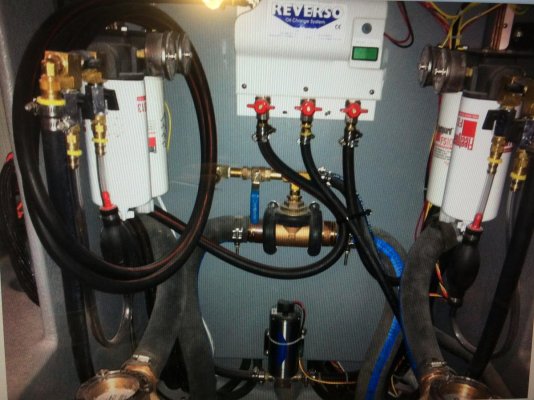Apologies if I annoy anyone but quite frankly some people turn the simplest of jobs into a major operation.
Cleanliness is paramount and diesel in a jar from a filling station is fine, don't you use it in your truck ?
Personally I always warm up the engine first, (warm, not hot),(it starts easier after the filter change).
Have a plastic bag ready, slacken the filter, then place the plastic bag around the filter and unscrew the old filter slowly and catch it in the plastic bag, naturally have plenty of rags/kitchen paper and another plastic bag to put any dirty rags in, it goes without saying that you have the correct replacement filter.
Here you can differ slightly and absolutely on NO account can I condone using ATF fluid.
IF you wish to put anything in other than diesel, use diesel injector cleaner.
Fill the canister right to the top with either injector cleaner or just plain diesel, use your finger to rub a little to coat the rubber 'O' ring, then carefully refit the canister and screw hand tight.
Then simply start the engine on tickover (idle) it may run lumpy for a while and clear itself without bleeding, it will smoke a little as the injector cleaner does it's job.
In the unlikely event it stops then slacken 2 of the fuel pipes at the injectors, wad kitchen paper around the 2 slackened pipes, start the engine on tickover(idle) leave it running and immediately tighten the 2 injector pipes, remove the paper and clean the area.
It goes without saying to stay clear of any moving parts.
If you use a removable canister the same principle applies.
Keep calm, think logically, don't turn a simple job into a drama.
A good squirt of lemon scented washing up liquid into your bilge after the filter change will kill any smells and emulsify any oil residue and if used regularly leave you with nice clean bilges.

